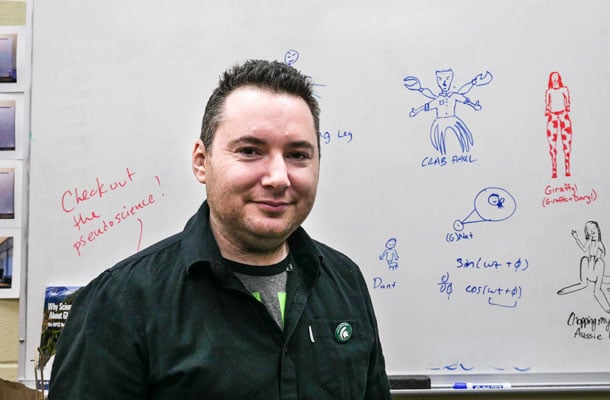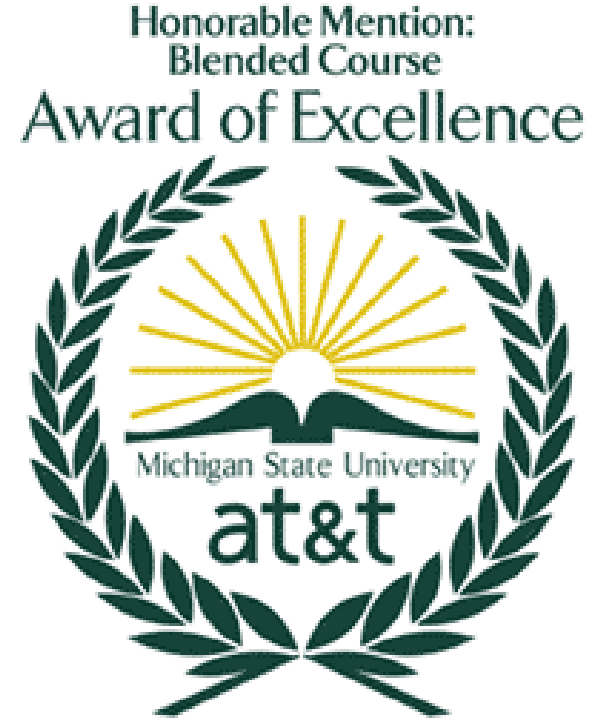Projects and Practices in Physics (P^3) is an introductory physics course for engineering and science majors that focuses on mechanics. The primary descriptor of the class is that it is a flipped, group based project-based learning class. We devote no in-class time to delivering material via lectures. The class has an array of learning goals that can be broadly described across two categories: deep conceptual understanding of physics and the appropriation of the practices of physicists. The focus on practices is inspired by the recent Next Generation Science Standards report that highlights practices as one of three essential parts of three-dimensional learning that is important to producing the next generation of scientists/engineers. The design of P^3 is to encourage the development of practices such as effective group work, modeling and computational modeling.
P^3 is a transformed, flipped, introductory, calculus-based mechanics course for science and engineering majors, which is grounded in evidence-based pedagogy (including peer discussion and conceptual & reasoning-focused homework). P3 is organized around core fundamental principles (conservation of momentum, energy, and angular momentum) that are meant to emphasize a first-principles approach to problem-solving. It also presents microscopic models to help students explain macroscopic phenomenon, and it introduces modern problem-solving tools (i.e., computational modeling). The learning and interaction outcomes that we hope to achieve through our use of computational modeling are relatively modest due to the introductory nature of the class. To avoid asking students to learn both a computational language and physics at the same time, our primary focus has been on providing a solid base from which subsequent physics classes with integrated computation can build on while also, in essence, selling computation to the students as a powerful tool for “doing” science and engineering.
Traditional textbooks were replaced with a wiki filled with resources, and one of tne of the key computational learning goals for the class is for students to understand iterative integration loops and how those loops can be employed to create model and visualize bodies in motion. The students then understand that these visual representations can be used to make accurate predictions of the motion of the body. For example, in one of the VPython programs that the students have to interpret and adapt, they have to model the motion of a hovercraft falling off a cliff and use their computational model to make predictions as to where the body will fall. See the following examples of the pre and post code for the hovercraft’s motion:
Students appreciated the attention to the multimodal approaches to building their learning experience. One noted: “Overall, as a student who came into this class with no former physics knowledge and a general distaste for the subject, this experience left me with a profound understanding of the topics covered and a passion for what I had learned. This class helped me be more comfortable in a group setting and more confident in my individual understanding of the physics. I would highly recommend any student to take this class as it provides students with everything necessary to succeed.” Another noted “I really loved this class. I feel like I had the opportunity to learn physics in the most appropriate way. I feel like I actually learned in this class rather than just try to pass it. I had the ability to get a good GPA in the class because I actually understood the material.”
Technologies and frameworks used in the course:
- Videolectures (https://www.techsmith.com/camtasia.html)
- VPython (http://vpython.org/)
Team members:
Danny Caballero, Physics and Astronomy
Michael Obsniuk, Physics and Astronomy
Stuart Tessmer, Physics and Astronomy
Richard Hallstein, Physics and Astronomy
Alanna Pawlak, Physics and Astronomy

